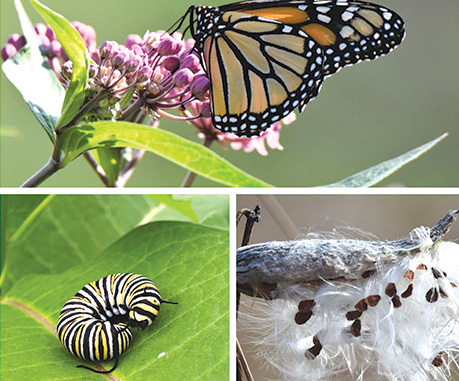My Samsonite suitcase is still stashed under the guest room bed as it has been since the days in March when we were told in no uncertain terms to stay home. I’m quite sure that my passport will never be found among my claptrap and that my days of resting my head on a stranger’s shoulder as we jet across the skies seems like a distant memory. I am gnashing my teeth and yearning to be told to put my seat back and tray table up as we have begun our initial descent.
So while most of us are staying put, the humble monarch butterfly is about to embark on a journey of remarkable length. He is visiting our flower beds, getting ready to make a maiden voyage all the way to a mountainous region of Mexico, where his great, great grandfather may have spent the winter congregating with millions of other monarchs in the trees. There, they conserve their energy and await spring to begin their return trip. But this return trip is more of a relay rather than a marathon. Adult butterflies usually live less than a month, so they will begin the journey. Along the way, they will lay eggs and pass the baton to another generation of monarch to continue north. Quite often, it takes three or four generations to reach New England and to finally stash the baton. The monarchs at the end of the line in New England will lift off and make the entire flight to Mexico. They only fly during the daylight hours and cannot fly if it is cooler than 55 degrees. Cold weather prompts the lift off. No one is certain how they navigate; a couple of theories include the use of mountains as beacons or following wildflower corridors to guide the way. At any rate, they end up on those sacred trees on the mountainside, and once again, nature’s mysteries add to the overall appeal of the insect.
All the flower gardens that folks madly worked on this spring when they were on lockdown have benefitted the monarch. But more than anything they need the patches of milkweed that crop up to be left undisturbed in order to complete their metamorphosis. The milkweed plant is key to that, as it is the sole food source for the monarch caterpillars. The butterflies seek the milkweed out as they lay their eggs, and they pollinate the milkweed to return the favor. Milkweed might not be the most striking of New England plants, but it does have a pink flower head and a cool pod, which unleashes a bunch of seeds in the late summer wind. And when the seeds are gone, the dried seedpod shouts transition, clinging to the plant and looking otherworldly. So you can’t get the glamorous monarch without its sidekick, the not so glamorous milkweed. And as a nod to our past when the roadsides, pastures and fields were filled with milkweed, maybe some restraint with the mower can leave room for a patch of milkweed and the butterfly crowd it attracts. As the ecologist, Sara Stein says, “if we don’t grow milkweeds in our gardens, we’ll have to tell our grandchildren we used to see monarch butterflies long ago”. Believe me; I don’t want to have to say that.
